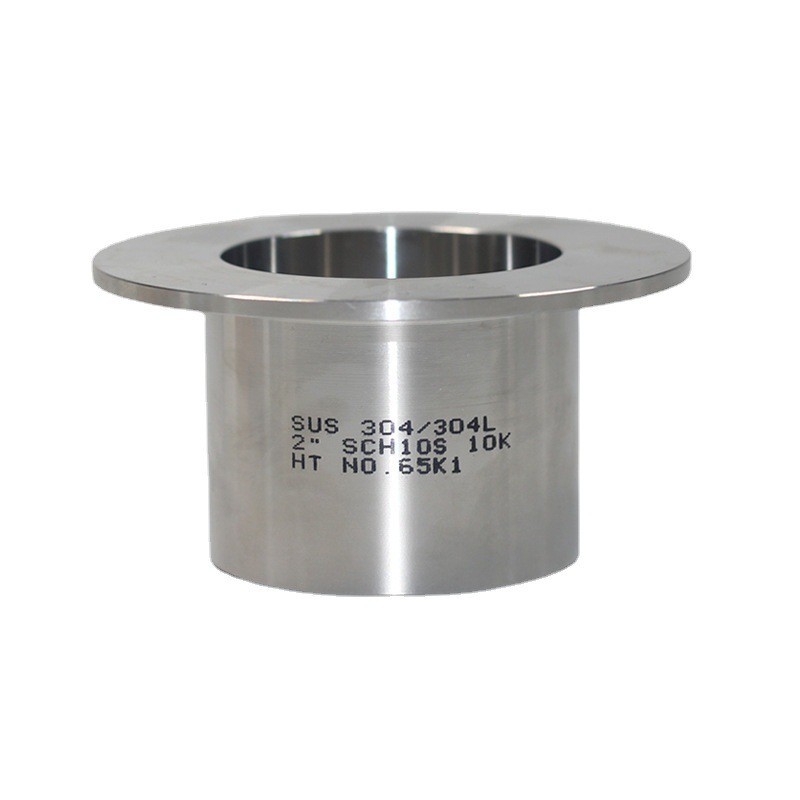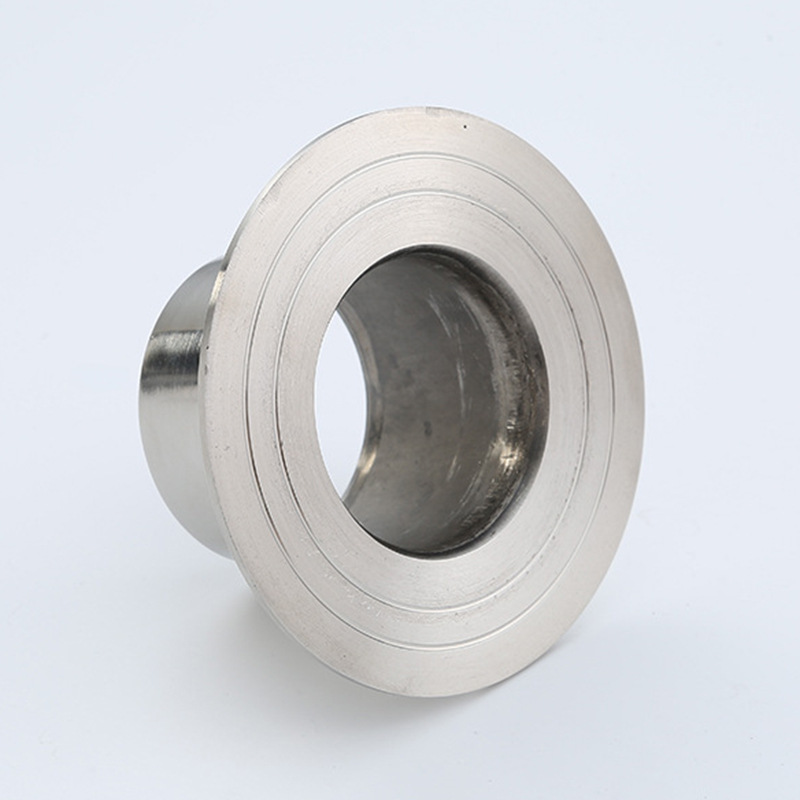Teléfono : +86-18059296519
Whatsapp : +8618059296519
Correo electrónico : [email protected]
Un extremo corto es un tipo de accesorio de tubería que se utiliza en diversas aplicaciones industriales para conectar tuberías o bridas.
Está diseñado para soldarse a la tubería o a la brida de la junta traslapada, proporcionando una junta segura y a prueba de fugas. El extremo del trozo en sí no tiene rosca; en cambio, actúa como un manguito que se desliza sobre la tubería o la brida de la junta traslapada. Este diseño único permite un desmontaje fácil y rápido de la junta cuando sea necesario.
Tamaño :
1/2''-24''Estándar :
GB/T12459, GB/T13401, SH3408, SH3409; ASMEIANSIB16.9, B16.28, ASTMA403, MSS SP-43; DIN 2605, DIN2609, DIN2615, DIN2616; JSB2311,JIS B2312,JIS B2313, JPF SP001Material :
Nickel Alloy, Duplex Steel, Stainless SteelExtremo del trozo Jis
Los extremos cortos son componentes esenciales utilizados en diversas aplicaciones industriales, particularmente en sistemas de tuberías.
Preparación sencilla: No necesitan caras cortadas perfectamente planas o paralelas.
Emparejamiento de metales versátil: Pueden unir metales diferentes, como aluminio y cobre.
Adaptabilidad del espesor: Se adaptan a diferentes espesores, con piezas más delgadas soldadas en la parte superior, lo que permite conexiones incluso con diafragmas y láminas.

Los extremos de los trozos se fabrican en tres tipos diferentes y dos de longitud estándar.
Tipo “A”: este tipo se produce y mecaniza para adaptarse a bridas de junta superpuesta. Las superficies de contacto del extremo del muñón y la brida de junta superpuesta tienen un perfil y una superficie coincidentes. El espesor de solapamiento de los extremos del trozo tipo A es > = el espesor mínimo de pared de la tubería conectada. El exterior del extremo del muñón y la brida de la junta solapada tienen un perfil y una superficie a juego. El espesor de solapamiento de los extremos del trozo tipo A es > = el espesor mínimo de pared de la tubería conectada. La esquina exterior del tipo A tiene un radio para acomodar el ala de unión traslapada, mientras que la esquina interior es cuadrada.
Tipo “B”: este tipo de extremos cortos es adecuado para bridas deslizantes estándar que actúan como bridas de unión traslapada. El espesor del traslape de los extremos del manguito tipo B es >= el peso mínimo del tubo de conexión. El solapamiento de este tipo de extremos de muñón tiene generalmente una cara dentada. Para garantizar uniones herméticas, se requieren chaflanes en el lado interior de la brida.
Tipo “C”: este último tipo se puede utilizar tanto con bridas solapadas como con bridas deslizantes y están fabricados con tubos. El traslape de los extremos del trozo tipo C está ensanchado y el espesor del traslapo es del 75% del peso del tubo de conexión. El tipo C tiene un radio exterior de filete corto capaz de albergar cualquier brida de respaldo.
Escriba “CS”: este tipo es similar al “C” con la diferencia que la cara traslapada tiene dentados concéntricos mecanizados durante el proceso de fabricación.
| Estándar | Especificación |
|---|---|
| ASTM A234 | Especificación estándar para accesorios de tuberías de acero al carbono forjado y acero aleado para servicio a temperatura moderada y alta |
| ASTM A420 | Especificación estándar para accesorios de tuberías de acero al carbono forjado y acero aleado para servicio a baja temperatura |
| ASTM A234 WPB | ASTM A234 es una especificación estándar para accesorios de tuberías de acero que incluye material de acero al carbono y aleado para servicios de temperatura moderada y alta. WPB es uno de los grados de acero en esta norma. |
| ASME B16.9 | La norma ASME B16.9 cubre dimensiones generales, tolerancias, clasificaciones, pruebas y marcas para accesorios forjados para soldar a tope fabricados en fábrica en tamaños NPS 1⁄2 a NPS 48 (DN 15 a DN 1200). |
| ASME B16.28 | La norma ASME B16.28 cubre clasificaciones, dimensiones generales, pruebas, tolerancias y marcas para codos y retornos de radio corto para soldadura a tope de acero forjado al carbono y aleado. |
| MSS SP-97 | La práctica estándar MSS SP-97 cubre dimensiones esenciales, acabado, tolerancias, pruebas, marcado, material y requisitos mínimos de resistencia para accesorios de salida de derivación forjados integralmente reforzados de 90 grados de tipo soldadura a tope, soldadura por encaje y roscados. |
| ASTM A403 | Especificación estándar para accesorios de tuberías de acero inoxidable austenítico forjado. |

Beneficios
Generalmente, la brida de la junta traslapada es de un grado inferior que el material del extremo del trozo y de la tubería, ahorrando así el peso total del material de alta calidad utilizado para la junta bridada.
El concepto de brida “suelta” de una junta traslapada es muy beneficioso durante la instalación en campo de sistemas de tuberías. Si se van a acoplar dos carretes en el campo, tener una brida que pueda girar es muy ventajoso al alinear los orificios de los pernos, antes de la introducción del perno y las tuercas que lo acompañan. La facilidad de orientación y alineación más sencilla de los orificios de los pernos es de particular utilidad si hay un carrete que debe retirarse con frecuencia, si el aislamiento positivo es un requisito del proceso.
¿Por qué utilizar Stub Ends?
El uso de un extremo de perno y una brida de junta traslapada proporciona un método alternativo para crear una conexión bridada, diferente de las bridas con cuello soldado.
Los componentes involucrados son:
Extremo del trozo: Esto es similar a un segmento de tubería, con un extremo abocinado hacia afuera y el otro preparado para soldar a una tubería del mismo tamaño de orificio (NPS = tamaño nominal de tubería), material y espesor de pared. Las máquinas abocardadoras se emplean comúnmente para darle forma al extremo de la tubería y luego recortarla a la longitud deseada.
Brida de junta solapada: Este tipo de brida facilita el atornillado de los dos segmentos de tubería, creando una conexión segura.
Este enfoque ofrece flexibilidad y facilidad de montaje, lo que lo convierte en una valiosa alternativa a las bridas con cuello para soldar tradicionales.